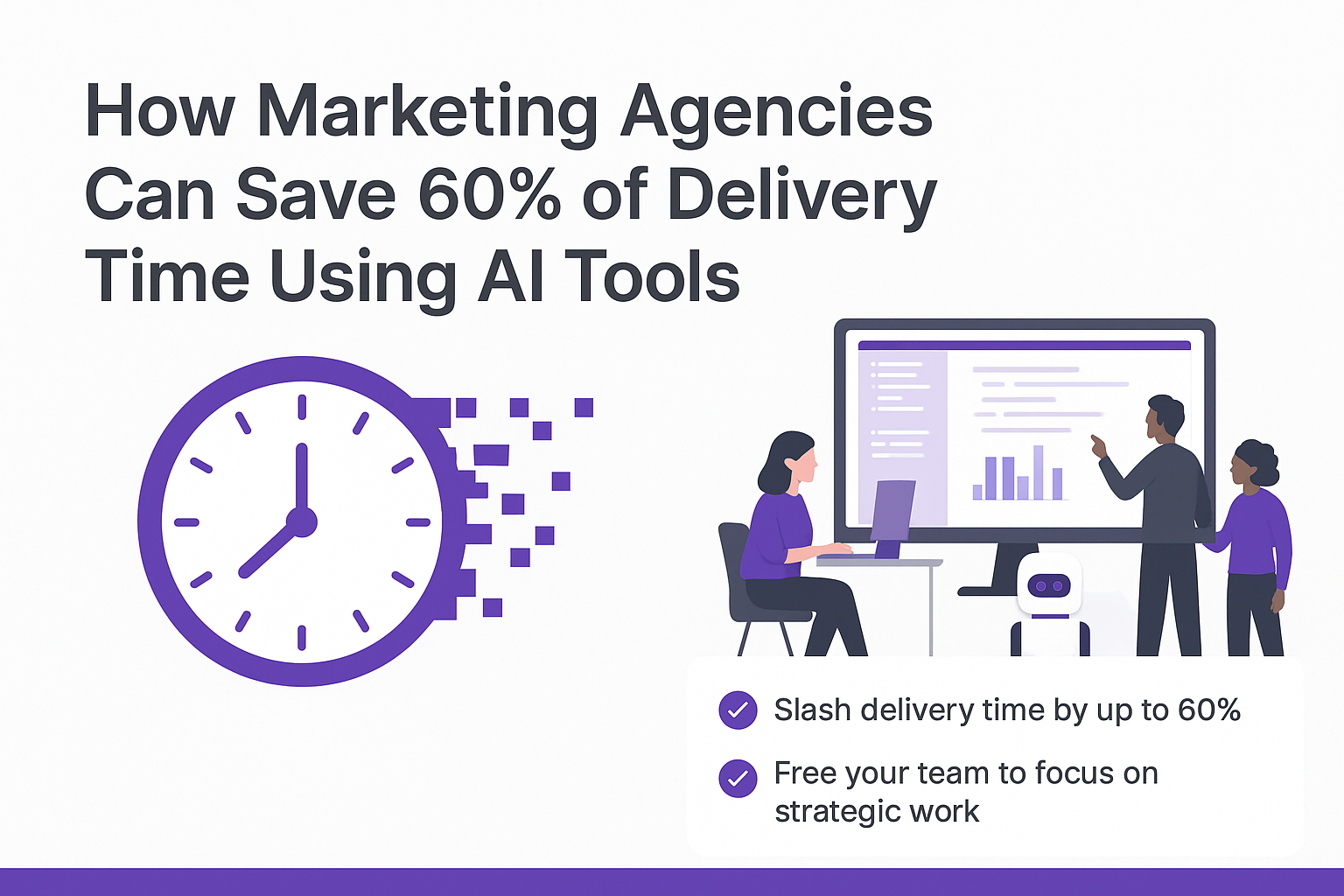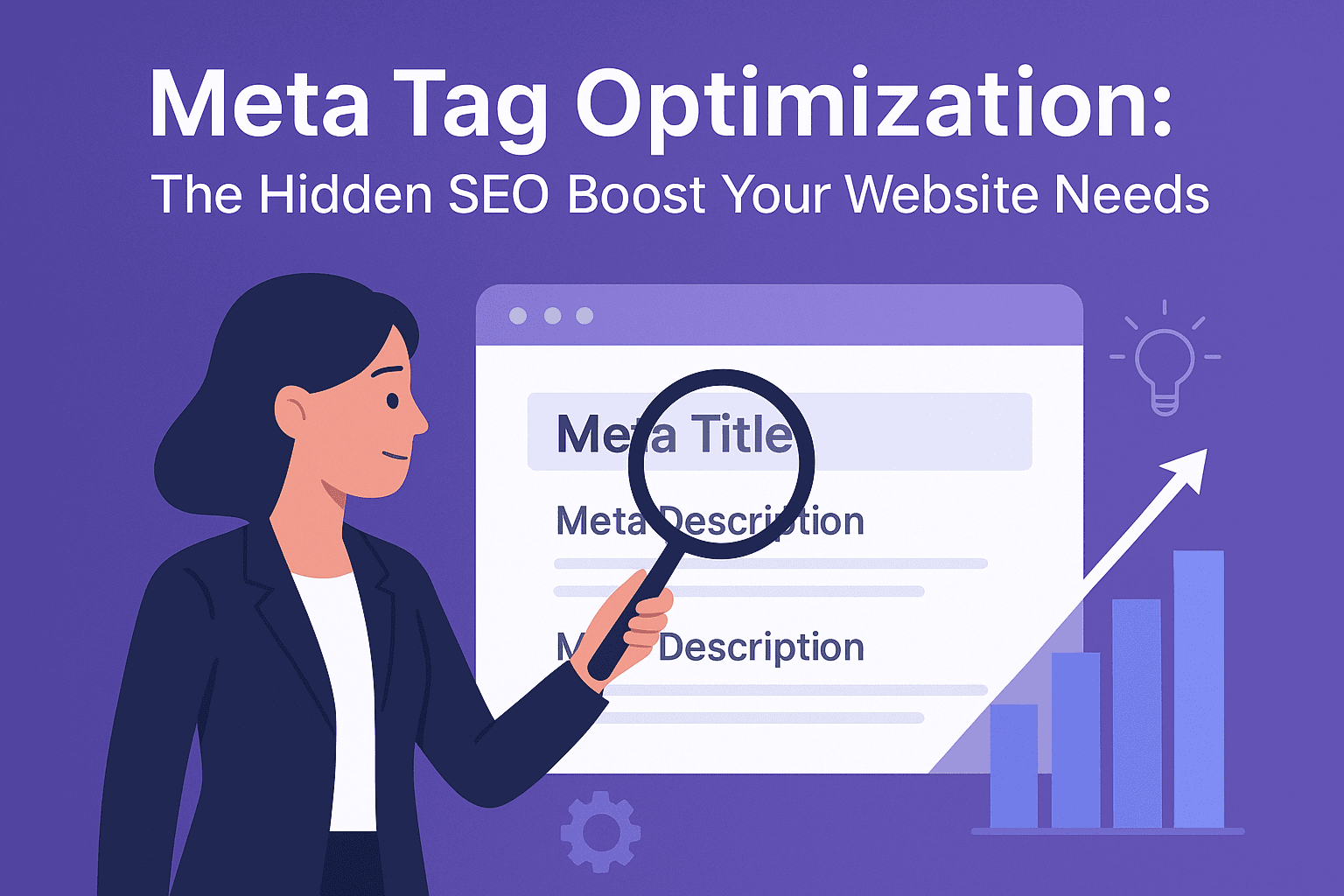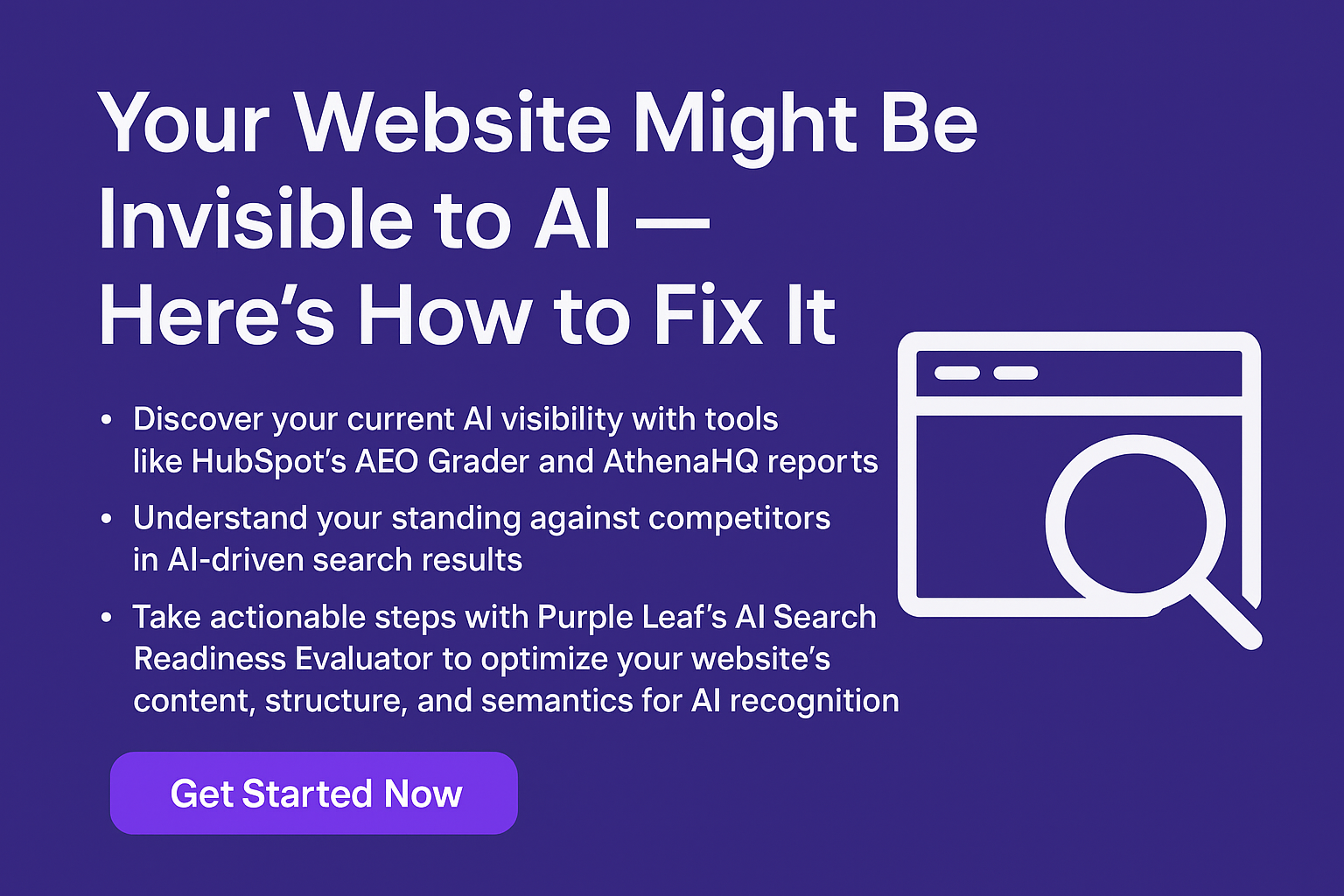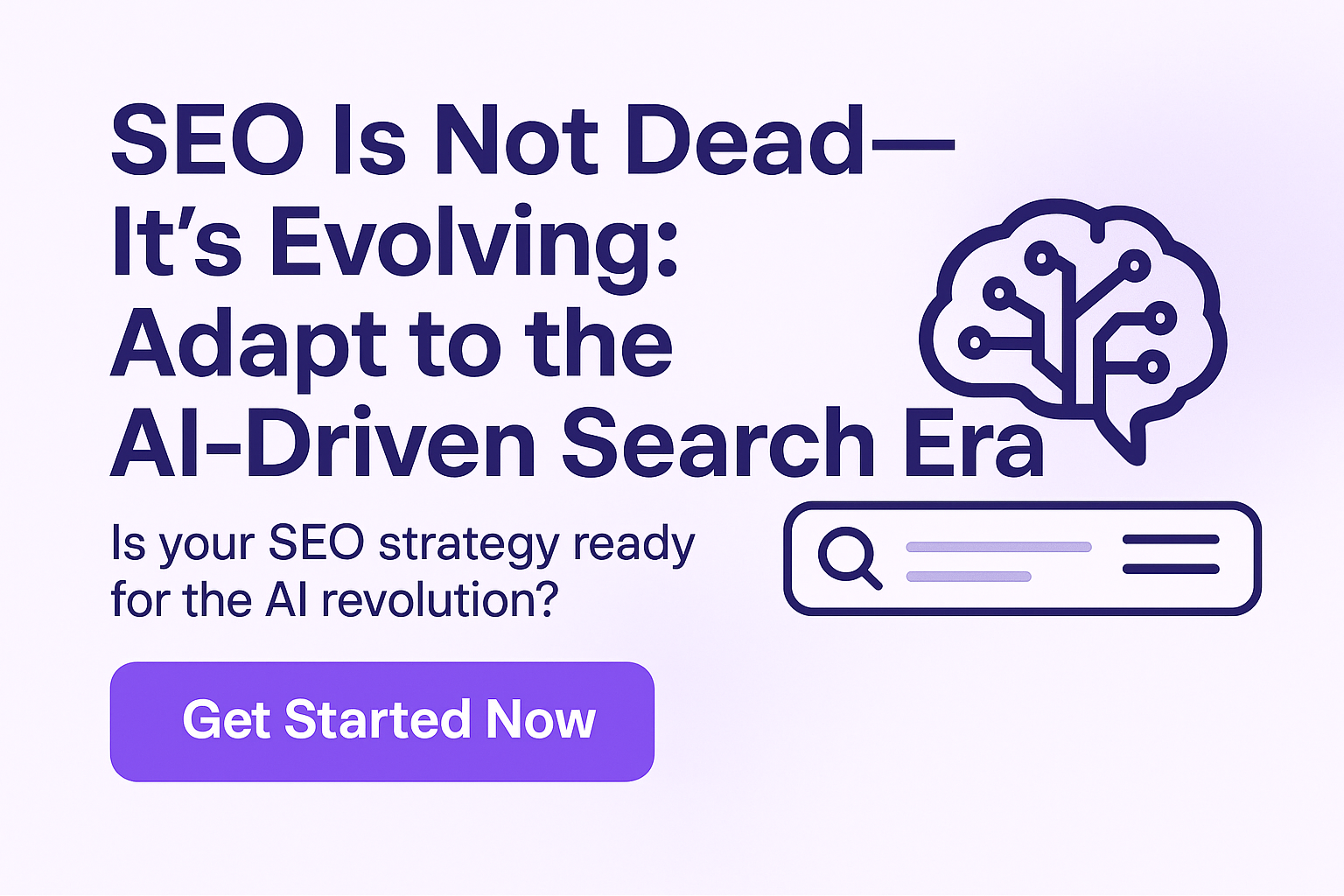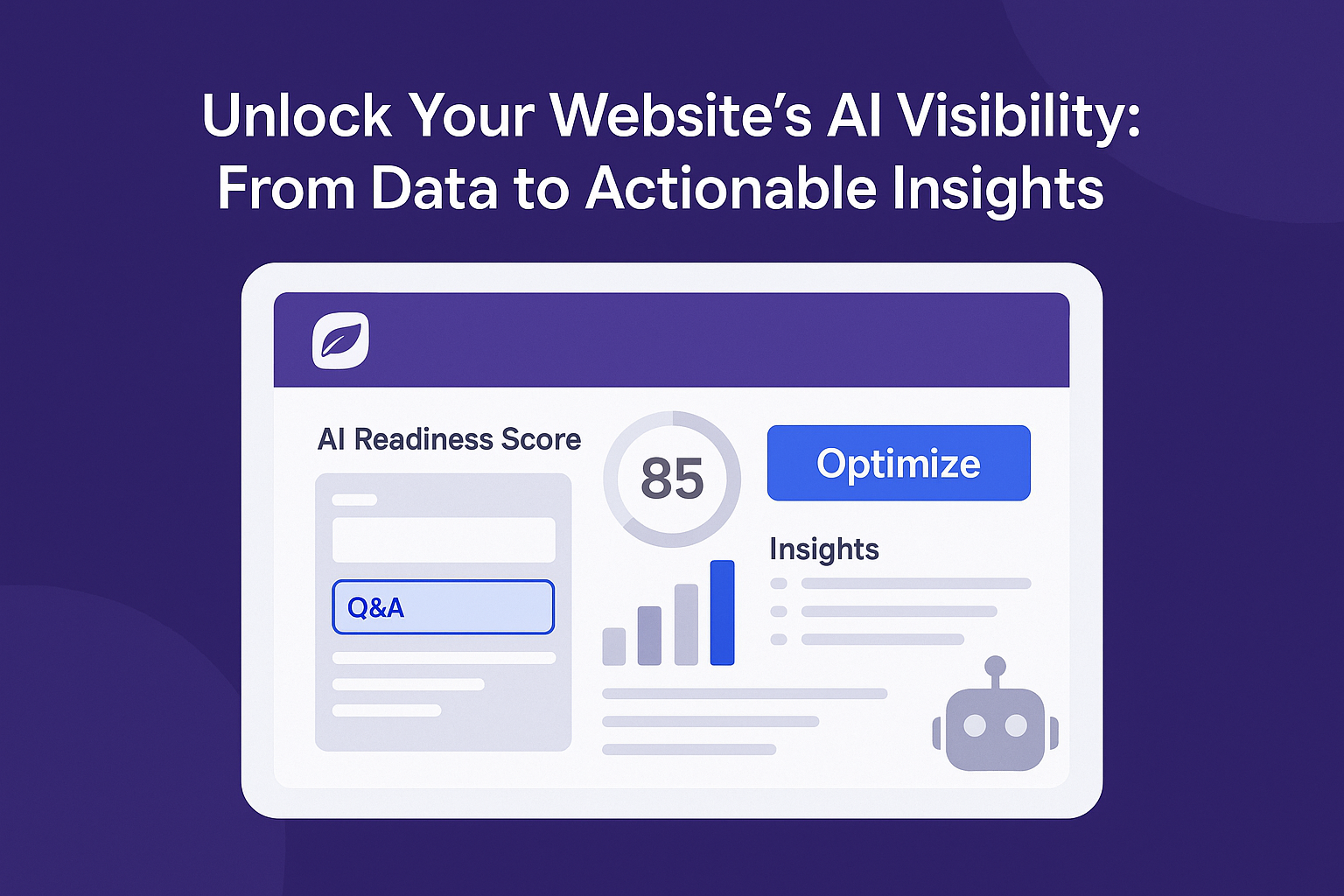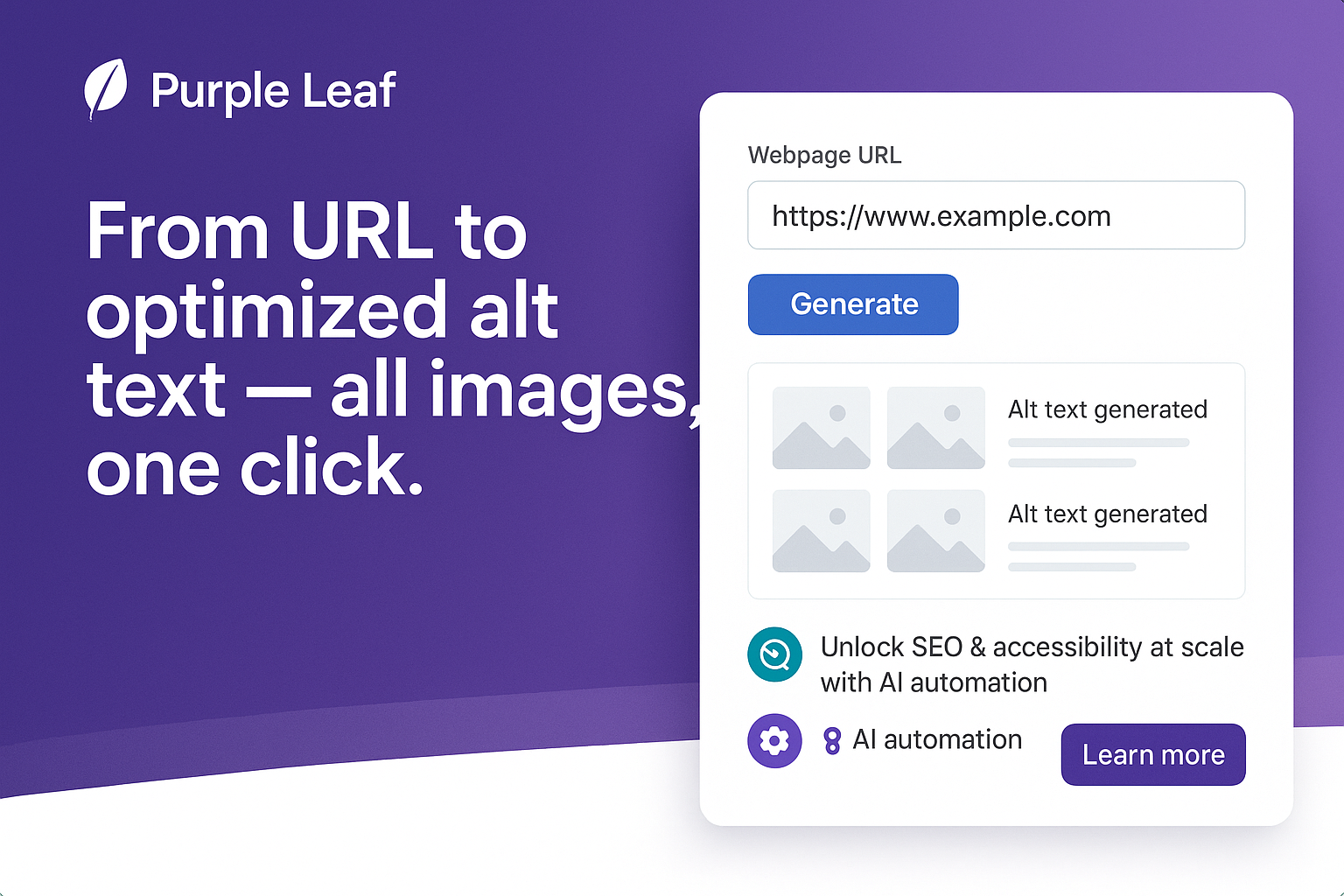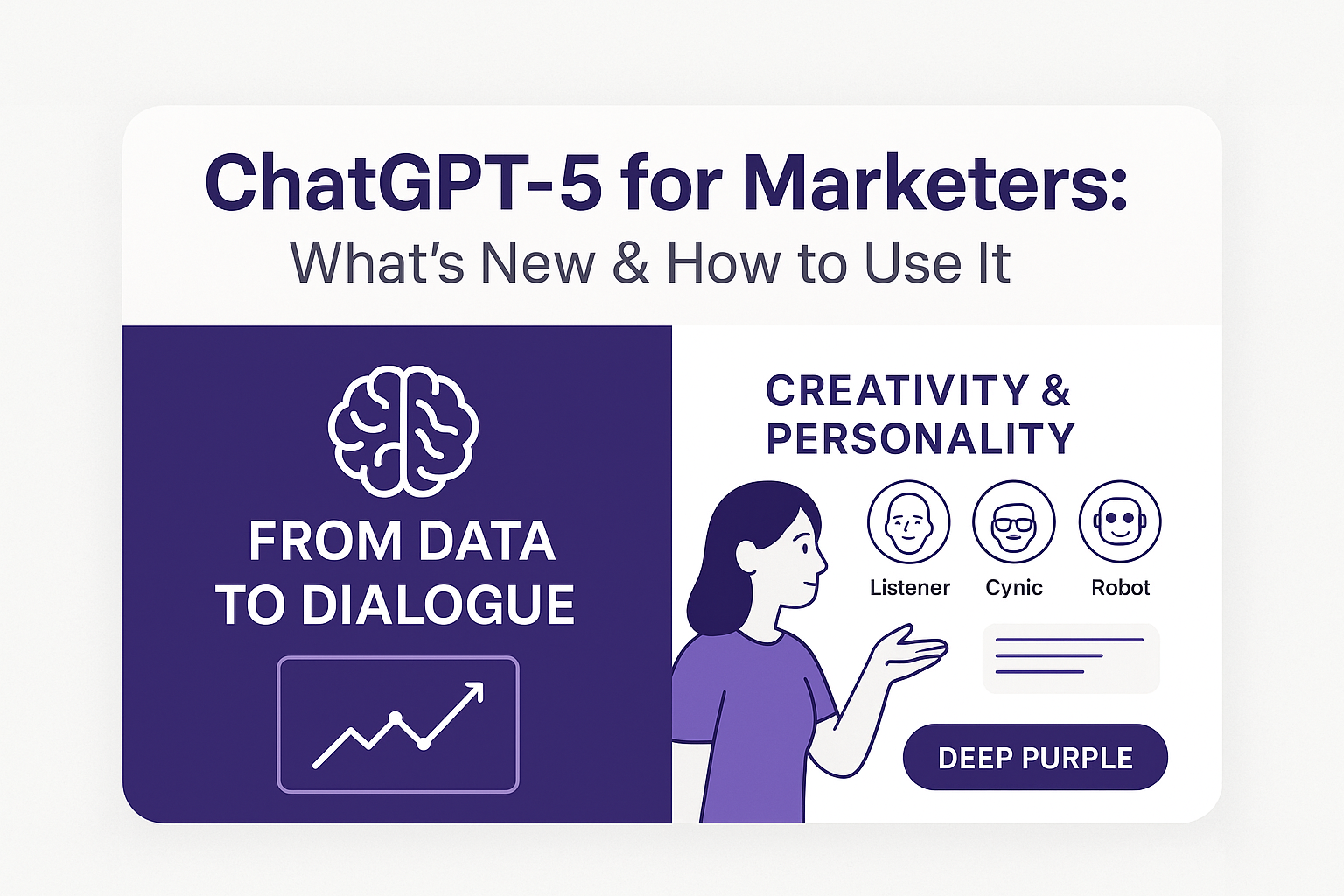
Introduction
AI is moving fast, and every leap feels like a shift in the foundation of how marketing operates. With GPT-5, it’s not simply “GPT-4o but bigger” — it represents a foundational change. While the overall process of marketing remains the same, GPT-5 introduces deeper reasoning, sharper analysis, and more structured workflows that marketers can build on.
For business owners and marketers, this means the evolution is less about reinventing the wheel and more about incrementally refining strategies with a stronger, smarter tool.
👉 This blog explores what changed, why marketers felt frustrated, and how to adapt workflows to make GPT-5 work for you.
The GPT-5 Revolution — What Exactly Changed?
The Big Picture: GPT-5 introduces a hybrid model system, with modes like “Thinking” mode that let it handle complex logic, analysis, and data-heavy tasks better than ever before.
Key Changes to Note:
- Reasoning & Accuracy → Dramatically improved at professional tasks like coding, data analysis, and SEO reporting.
- The Creativity Conundrum → In its default state, GPT-5 can feel less conversational, less “effortless” than GPT-4o. That’s where some frustration began.
- New Personalities → GPT-5 introduced four personalities — Cynic, Robot, Listener, and Nerd. These are useful levers for marketers to fine-tune tone, empathy, and creativity in outputs.
For marketers, this means GPT-5 is less about a “magic writing assistant” and more about a strategist with customizable tools.
The Frustration Factor — Why Did Marketers Struggle?
When GPT-5 launched, a lot of long-time users were disappointed. The smooth, creative, human-like feel of GPT-4o seemed gone. Instead, they got a model that was more analytical, structured, and sometimes too rigid.
For marketers, this hits hard. Because in creative work — human feel matters more than raw computational power.
The Lesson for Business Owners
“More powerful” doesn’t always mean “better for my specific task.” A CEO wants insight, but a marketer needs resonance. GPT-5 shows us that we must adapt our workflows, not expect the tool to behave like its predecessor.
From Frustration to Functionality — How to Master GPT-5 for Marketing
This is where GPT-5 shines — if you know how to use it. Instead of relying on it as a “do-everything” model, marketers should use its modes, personalities, and reasoning power strategically.
1. Content Creation (Blogs, Articles)
Before (GPT-4o): Easy for brainstorming, drafting, and generating natural, conversational long-form content.
After (GPT-5): Use Thinking mode for research, outlines, and SEO mapping. Then, switch to a creative personality (e.g., Listener for empathy, Nerd for detailed guides) for the actual writing. This hybrid approach balances structure with personality.
2. Social Media & Short-Form Content
Before: Quick with punchy captions and post hooks.
After: Best at trend analysis and audience segmentation — use it to identify what will resonate, then specify tone and style when drafting posts. Use Cynic for edgy humor, Listener for warmth, or Robot for clean, minimalist messaging.
3. Image Creation & Alt Texts
Before: Mostly used for alt-text generation and simple prompts.
After: Improved reasoning enables concept-driven visuals. Example: “An image of a SaaS founder experiencing flow — clarity, simplicity, and efficiency.”
4. SEO Reports & Analysis
Before: Needed external tools for competitor or keyword analysis.
After: Thinking mode processes large SEO datasets, maps content gaps, and creates full SEO reports with keyword clusters.
5. Email Marketing
Before: Templates and generic personalization.
After: GPT-5 can segment audiences and create tailored subject lines and bodies for each group. Use creative personalities to adjust tone.
6. ICP (Ideal Customer Profile) Targeting
Before: Required manual market research and personas.
After: GPT-5 can analyze behavior, segment audiences, and refine ICPs with greater accuracy. It maps customer journeys, identifies purchase triggers, and tailors messaging for each stage of the funnel.
7. Customer Service & Chatbots
Before: Rule-based, FAQ-driven bots.
After: The Listener personality makes chatbots empathetic and natural, turning every interaction into part of the brand story.
Before vs. After: GPT-4o vs GPT-5
| Marketing Task | GPT-4o (Before) | GPT-5 (Now) |
| Blog Writing | Natural, conversational drafts | Strong outlines, data-backed, personality-tuned |
| Social Media Posts | Quick captions, light tone | Trend-driven, personality-specific hooks |
| Image/Visual Creation | Limited, basic concepts | Abstract, concept-driven workflows |
| SEO Reports | Basic suggestions | Full competitor + keyword analysis |
| Email Campaigns | Generic personalization | Segmented, tone-optimized |
| ICP Targeting | Manual personas | AI-driven audience insights |
| Customer Chat | FAQ-driven | Empathetic, reasoning-based |
The 3-Step Playbook for Marketers Using GPT-5
- Audit Your Workflows
- Map out where you spend the most time: blog research, post creation, ad testing, customer service.
- Identify which tasks are reasoning-heavy vs. creativity-heavy.
- Map out where you spend the most time: blog research, post creation, ad testing, customer service.
- Assign GPT-5 the Right Roles
- Use Thinking mode for analysis, SEO, ICP mapping, and campaign planning.
- Use personalities (Listener, Cynic, Nerd, Robot) for creative outputs like ads, posts, and content.
- Use Thinking mode for analysis, SEO, ICP mapping, and campaign planning.
- Layer Human Creativity on Top
- Don’t let GPT-5 be the final word. Review, edit, and refine.
- Add your brand’s unique voice and insights to stand out from AI-generated noise.
- Don’t let GPT-5 be the final word. Review, edit, and refine.
Mini Case Study: A Startup’s Experience with GPT-5
The Challenge: A SaaS startup relied on GPT-4o for quick, conversational blog drafts and social captions. With GPT-5, the content initially felt too rigid and formal.
The Shift: They used GPT-5 in Thinking mode for SEO research and ICP analysis, then switched to the Listener personality for drafting. This balanced accuracy with warmth.
The Result:
- Blog drafts created 30% faster
- Improved SEO rankings on long-tail keywords
- Social engagement up 22% thanks to sharper trend analysis and ICP-driven captions
👉 This proves GPT-5 doesn’t replace creativity — it amplifies it when used strategically.
Industry Applications: GPT-5 in Action
- SaaS & Tech Startups: Use reasoning-heavy workflows like ICP docs, onboarding sequences, and technical SEO reports.
- E-Commerce & Retail: Automate seasonal campaign assets, run ICP-based personalization, and optimize product descriptions.
- Healthcare & Wellness: Generate patient education guides, empathetic chatbot scripts, and SEO blogs on treatments.
- Real Estate & Property Management: Analyze market reports, draft neighborhood guides, and create ICP-based outreach strategies.
- Education & Online Learning: Build structured curriculums, segment student personas, and draft marketing campaigns for courses.
Conclusion: The Future is a Hybrid Approach
GPT-5 isn’t a straight replacement for GPT-4o — it’s a different tool with different strengths. For marketers, the key is to embrace a hybrid approach:
- Use GPT-5 for data, strategy, and structure
- Leverage personalities and prompts to bring back creativity
The businesses that thrive won’t expect AI to magically do it all — but will assign AI the right jobs at the right stages of the funnel.
And for those looking to put this hybrid approach into practice, GPT-5 fits best at the front end of the flow — research, ICP analysis, SEO planning, and structured content creation. Once that foundation is set, the challenge becomes distribution and consistency. That’s where Purple Leaf comes in: transforming your website content into polished, ready-to-publish social media posts. Together, GPT-5 and Purple Leaf close the loop — GPT-5 gives you sharper strategies and messaging, while Purple Leaf ensures that content consistently reaches your audience at scale.
